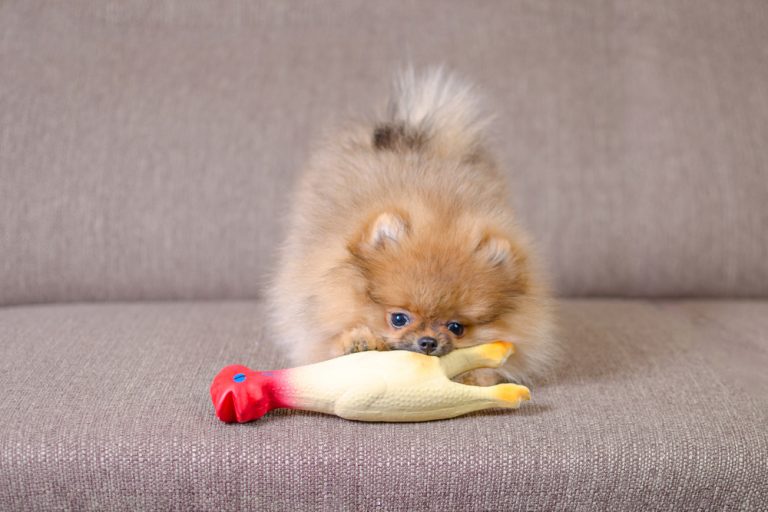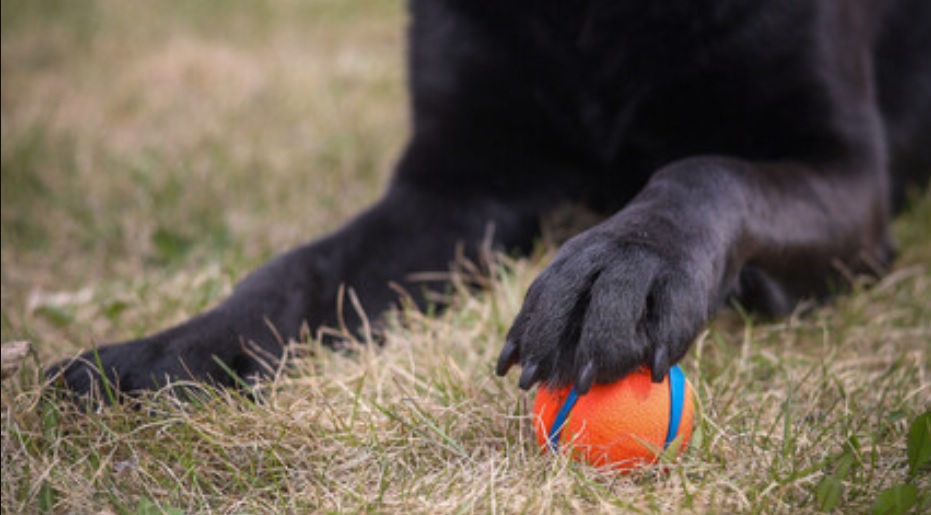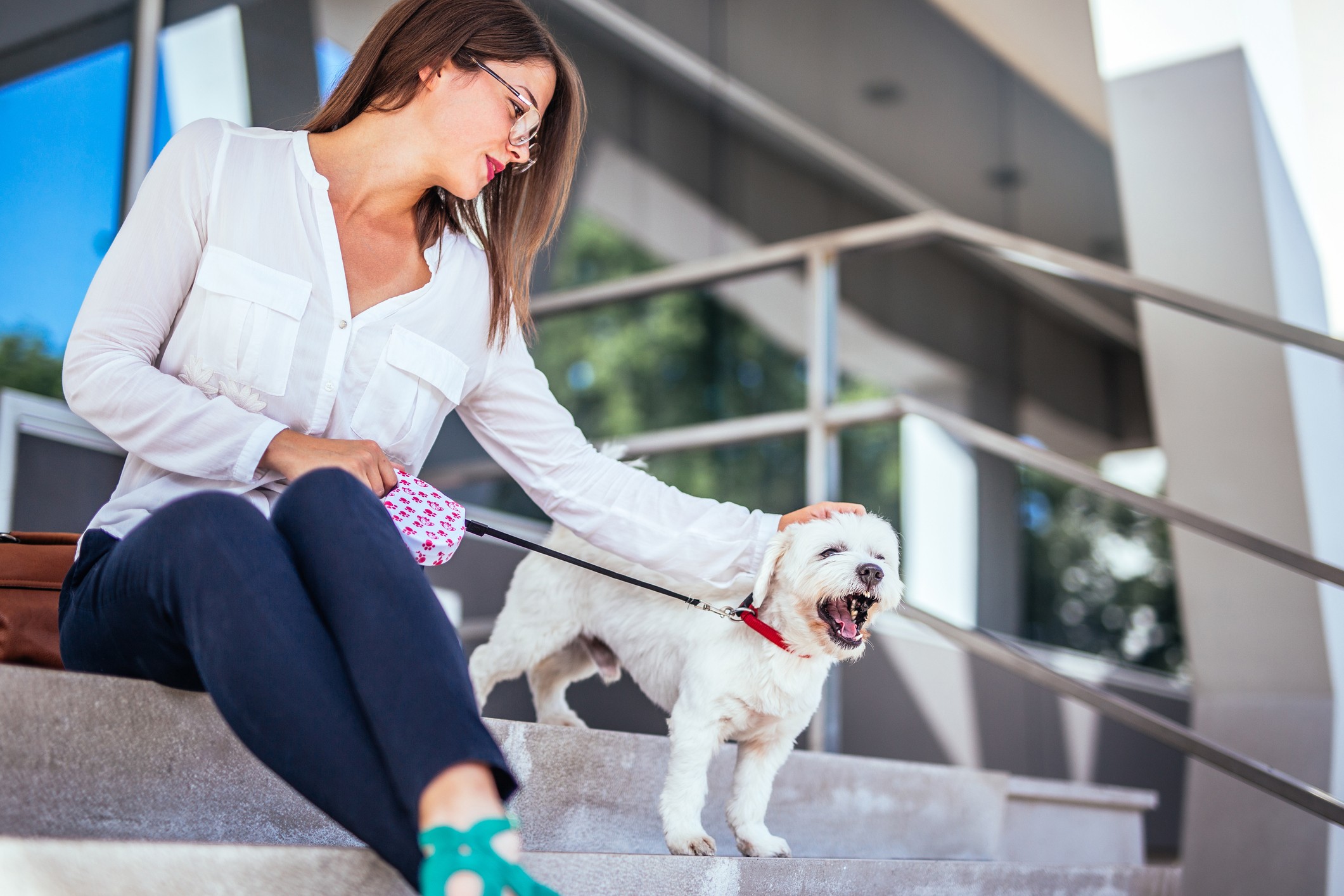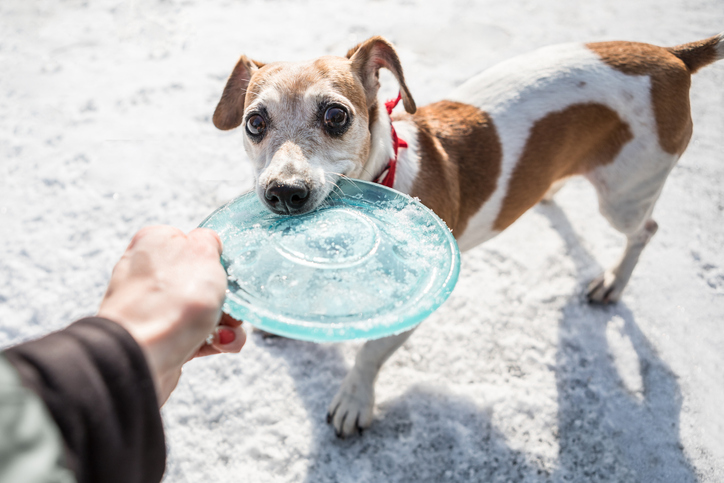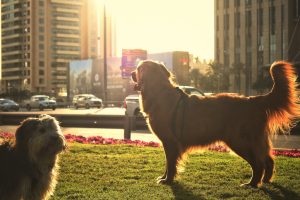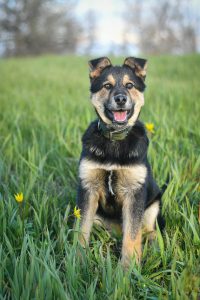Resource guarding in dogs is also known as possessive aggression. If you ignore it, and let it continue, it can be quite alarming and scary behavior. And no dog owner wants to experience it to be fair. Yet, sometimes, to no fault of our own, it happens. Sometimes, we might even encourage it unknowingly. With that in mind, I will try to talk about this common behavior, how to handle it, and how to prevent it.
Let’s be honest, almost any pet parent has faced it at least once. You go and try to grab a chew your dog has left, and you are confronted with some growling or even lunging. Or you get a hard stare and growl when you try to sit down next to your dog on the couch.
Notice I do not mention food. But that should be a no-go for any dog parent. Why would you want to get your dog’s food while he is eating? With that in mind, resource guarding can happen between two dogs or between owner and dog.
What Is Resource Guarding?
We have to start by defining the behavior. Often called possessive aggression, this behavior happens when your dog shows overly protective behavior over a resource. Now, that resource can be everything. From a toy, treat, food, or even you. Notice how some dogs guard their humans outside.
The big mistake is thinking this natural behavior should be tolerable. Yes, it served an important role in the evolution of animals and their success.
Dogs are opportunistic feeders, and they eat as much as they can when they can. Fending off competition with guarding behavior was a way for some dogs to survive.
But while it is an evolutionary trait in wildlife, it should be conditioned out from domesticated animals.
Now, what I want to stress is that even if your dog is showing resource-guarding tendencies, you should not take it he is a bad dog or aggressive dog.
What Is The Trigger?
There are several items that can trigger an aggressive behavior like resource guarding. Usually, it happens with food, but it can happen with any high-value item. Anything that your dog deems valuable is fair game. I want to divide this behavior into three groups.
- Food aggression for food, treats, food bowls, edible chews, and bones
- Non-food aggression like toys, socks, laundry items, space like a dog bed, crate, position on the couch, and similar
- Their owner, pets that have guarding instincts often show this type of behavior when strangers approach their owner
What Causes Resource Guarding?
The bad news here is that it can happen at any point in your dog’s life. Usually, it develops when breeders feed puppies communally out of one big vessel, without tending to the weaker newborns. This is why you should always try to get a puppy from a reputable breeder. There are so many concerns and bad behaviors that begin while the puppy is in the breeder’s home.
But it can also develop at any stage of life. It happens more with dogs that are abused, abandoned, or mistreated. This is why you need to work even more with a rescue dog. You do not know their history. Yet, if you show them enough love and affection, rescue puppies will appreciate it even more. Trust me, I can guarantee that.
Sometimes, in older dogs, resource guarding happens as a symptom of an underlying health issue. Any sickness can cause the dog to stress and show aggressive behavior.
What Are The Signs?
It is important that you make the difference between aggression and “normal guarding”. The trick here is to look at subtle ways that your dog is telling you to go back. Here are those:
- Lowered head with the body over the item
- Narrowed-in staring
- Stiffening of rigged stance
- Running away with objects
- Refusing to drop items
- Showing teeth and curling lips
- Rapid eating and chewing
How To Deal With It?
Now I want to give you a step-by-step guide on how you can stop resource guarding in dogs. It is not an easy process. Do not expect results overnight. You have to put a lot of time, effort, and dog training into it.
You have two options here. Either hire a certified professional dog trainer or animal behaviorist or try to work on it at home. In some cases, it might be impossible to solve it at home. More on that later on. Now, let’s try and see how you can handle the problem at home.
Step 1 – Desensitization
I’ve talked about desensitization so many times on my blog, and I have to say it again. It is the solution to almost all problems.
If your canine is too protective of its possessions, this is a great way to approach them and help them. What is desensitization? It is a process in which you go closer and closer to the comfort zone and desensitize until the finish line.
Start by standing outside of the reaction zone, and let your dog enjoy its prize. The goal here is for your dog to get used to you standing there and not taking the food. Gradually, move closer and closer, and do nothing as your dog enjoys its food. The moment your dog reacts, pull back. Over time, you can move closer and your dog will not react.
Step 2 – Trading Up
This is another game I have written about for modifying a dog’s behavior. Basically, you trade a high-value treat for a lower-value treat.
As you stand outside of the reaction zone, toss a high-value treat in your dog’s direction. Once the dog is comfortable with this, walk slowly and drop treats closer and closer to him. The goal is to get closer to the item they are guarding, and trade for treats.
Step 3 – Increase The Intensity
The final step should alter your dog’s emotional response to you coming closer and taking away their possession. You want your dog to react positively. Or in other words, get your dog in a mood of “I will do anything for a treat”.
Start away, and slowly approach the reaction zone. Your dog will tell you when you are too close. Stop and wait until the aggressive behavior subsides, and then repeat the process. Slowly, you should be able to comfortably approach your dog, touch the prize, and not trigger aggression.
Step 4 – My Trick
Here is something I have learned over the years that has worked successfully with Milo. He was quite protective of his balls when he was younger. When he got a ball in his mouth, he wouldn’t let it. For him, running away from me with the ball was his way of playing.
But I changed his game. Now, when he drops the ball, I throw it, and it continues the game. He knows that the reward for dropping is playing even more. Or have him in a sit position to start a game.
Sometimes I throw a ball, sometimes I give him a treat. But what is most important is that the game continues. If your dog understands that you picking up the toy means playing more, he will happily succumb to it.
What Not To Do?
I said in the beginning that you can trigger resource guarding in dogs unknowingly. And even encourage it. That said, here are some things YOU SHOULD NEVER do.
Do Not Punish The Growl
You should never punish a growling dog. Your puppy doesn’t understand what you are punishing. That makes him become even more aggressive. If your dog learns that growing and expressing its comfort results in a punishment, and the loss of their precious item, the next time you try to reach out, he will not growl. Instead, he might bite you immediately.
Think about it this way. Someone is stealing your fries. You tell him/her to stop. And he doesn’t. The next time that person reaches for your fries, you will not speak stop, you will do something about it, right?
Do Not Play With Their Food And Chew
Many dog owners try to show their puppies who the owner is. So they randomly take away their chew or food. But what happens is, instead of the desired result, you get a dog who snaps when you reach for the bowl. Or lashes out at people even walking by the bowl.
Should You Seek Professional Help?
I suggest trying my 4-step tips to stop resource guarding. But if you notice there are no results, it might be time to ask for professional help from a dog trainer.
Now, all dog owners think they can handle their dogs. Yet, sometimes, things get out of control. And instead of dumping your dog to a shelter, ask for professional help. Do not give up on your dog.
You simply might be mishandling the situation. If resource guarding leads to biting, immediately call a behaviorist. If left unchecked, this canine behavior can become problematic and dangerous.

